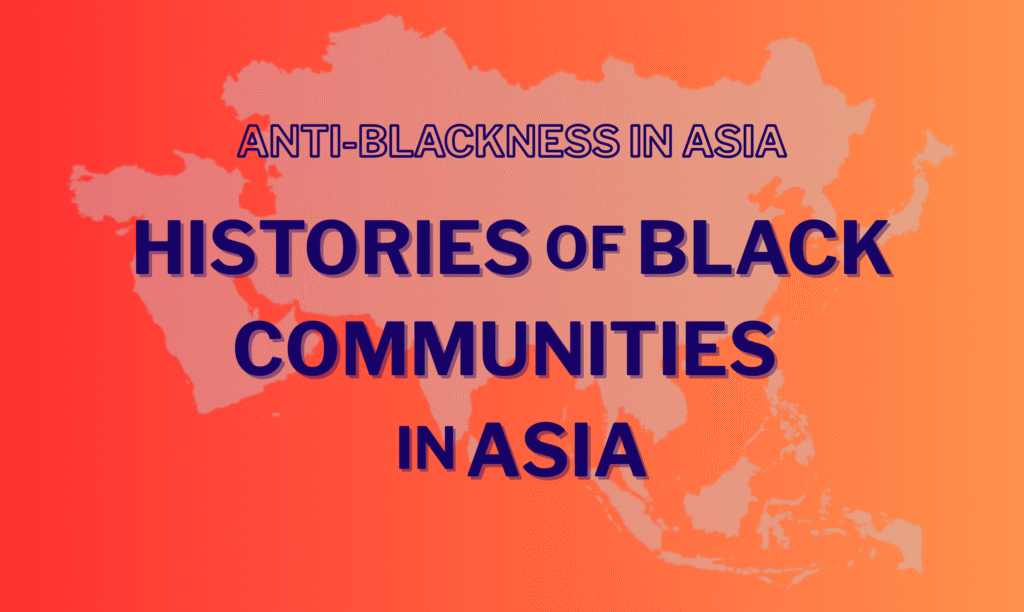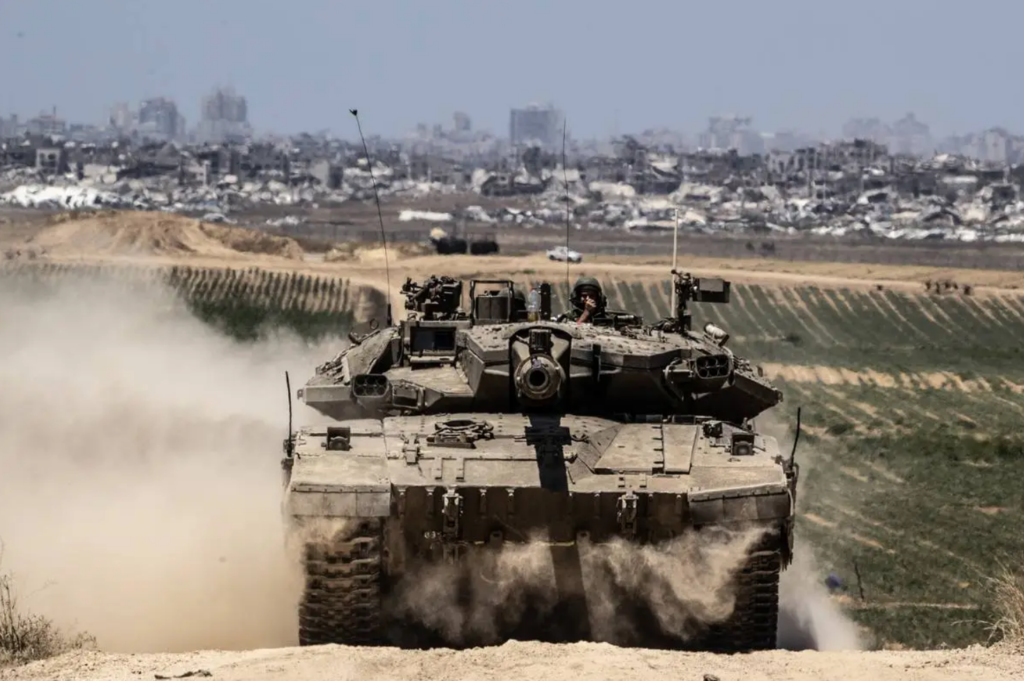Part IV of my series on anti-Blackness in Asia
In part one of this series, I discussed five key components of anti-Blackness that exist globally. Today we’re expanding on the first one: the destruction and devaluation of Black existence. This refers to the way that Black people are systematically dehumanized, disenfranchised, dispossessed of their land, and destroyed. Often, this dehumanization takes place to justify the exploitation of Black people for labor, as in slavery. But anti-Blackness also exists in and of itself, such that non-Black people will often work against their own economic, political, or social interests just to perpetuate anti-Blackness.
All of these dynamics play out against Black people in Asia.
Associations with historical slavery
Despite the fact that people of many different races were enslaved in the Indian Ocean slave trade, it is Black people in Asia today who are still associated with slavery, across many languages and cultures. Firstly, in Southwest Asia, Arabic words and idioms referring to slavery are specifically linked to Blackness and used derogatorily against Black people. In Jerusalem, the neighborhood where Afro-Palestinians have lived for generations is known as the “slaves’ prison”. (Afro-Palestinians suffer this kind of dehumanization dually, both as subjects under Israeli settler colonialism and nakba and through racism from within the Palestinian community.)
Historian and Africana studies scholar Beeta Baghoolizadeh discusses the use of the Persian word sīyāh (“black”) in Iran, whose meaning, when referring to people, has changed over time. For centuries, Africans and South Asians alike could be called sīyāh, but in the 19th century, its meaning narrowed to refer only to Black East African people – and, as Dr. Baghoolizadeh tracks, specifically to enslaved Black people, where “sīyāh” was frequently used as a stand in for “slave”, even in government documents, despite the existence both of free Black people and of non-Black enslaved people in Iran. In the 20th century, its meaning changed again, and now sīyāh typically describes non-Black actors in blackface, a tradition that itself is rooted in the history of slavery of Black people in Iran (despite extensive attempts in Iran to deny that history).
In addition to the word sīyāh, historical linguists Agnes Korn and Maryam Nourzaei document that in Iranian Balochistan, particularly on the coast, Afro-Balochi people are referred to by the Persian word golām (“slave”), both within their own communities and by outsiders. Golām appears as a tribal and family name in Afro-Balochi communities as well.
Black Indigenous communities in Thailand and Malaysia are also known by derogatory names that mean “slave”; while these terms historically have been used to describe Indigenous communities in general, their contemporary usage appears to be specifically for Black Indigenous communities. In Yemen, Black Muhamasheen people are sometimes still known by a derogatory name that means “servant”. American anti-Black slurs like the n-word, which is deeply entrenched in the history of U.S. slavery, make their way into Asian communities as well; journalist Dalia Awad reports on the racism faced by a Black Kuwaiti interviewee named Almoataz, who says:
“As a little kid, I would have other kids call me ‘abd’ [slave], or say that I wasn’t a real Kuwaiti. Kids would make fun of me for my curly hair and call me names like falafel-head or broom-head. As we got older and the kids started to take in more American media, the name-calling changed and the kids started calling me variations of the N-word.”
The common narrative that anti-Blackness in Asia is not related to slavery is perpetuated through constant erasure of the true nature of Indian Ocean slavery. Dr. Baghoolizadeh analyzes the reconfiguration of urban space and architecture in post-abolition Iran to visually erase the legacies of slavery, as well as the propagation of the idea that Iranian slavery was the fault of Arabs and “foreigners”. Poet Momtaza Mehri writes about her visit to Bin Jelmood House in Qatar, a former slave trading site that has now been turned into the first museum in the Arabian Gulf to address slavery:
“We are informed that the Indian Ocean slave trade was not linked to any particular race or ethnicity and that, until the eighteenth century, most enslaved people across the Gulf hailed from Eastern Europe, Central Asia and Persia. This does little to explain why enslavement as a residual inheritance remains so wedded to Africa and its descendants within the imaginative landscapes of both the Gulf and the wider Arab world. Time and time again, we return to Zanzibar, to the gradual Blackening of a global institution. ‘In the nineteenth century, an estimated 1.6 million people were enslaved in East Africa.’ A display informs us that half remained on the African continent while the rest were displaced across the Indian Ocean Triangle.”
Even spaces that are created to make the history of slavery visible can be complicit in trying to erase its anti-Blackness.
Contemporary slavery
The Bin Jelmood House also reminds visitors that slavery is not only historical: Black people today are subjected to slavery and labor trafficking across Asia. Indeed, anthropologist Nidhi Mahajan cites allegations that the Bin Jelmood House may have in fact been created to respond to criticisms of Qatar’s horrific human rights violations during the ramp up to the 2022 FIFA Men’s World Cup, the horrible conditions and racist treatment experienced by Kenyan diaspora workers and others, including many unexplained deaths.
Another widespread and ongoing source of contemporary slavery is the kafala system in Southwest Asia (which in fact originated from the system of slavery for pearl diving in the Gulf), a form of visa sponsorship that binds foreign workers to a person or business, leading them to be completely dependent on their employers. Black women in particular face incredible violence through the kafala system, including gender-based and sexual violence, abuse, torture, and murder. Many bosses force their workers to live in poor conditions, depriving them of medical care and food. Enslaved people often die from escape attempts or suicide.
Labor trafficking of Black folks is not limited to Southwest Asia. Many East Africans, primarily women, are subjected to scams from Myanmar, where they are promised jobs in Thailand with visa sponsorship and even airline tickets – but after arriving in Thailand, they are instead transported across the Myanmarese border, where they are enslaved and possibly even at risk of organ harvesting. In Laos, African teenagers are trafficked to play football/soccer and forced to sleep on floors in overcrowded living spaces, as well as failing to be paid.
Theft of land and displacement
Black communities’ lands are constantly stolen from them. At the beginning of the 1960s, after British colonization in South and Southeast Asia had ended, the population of Indian settlers in the Andaman and Nicobar Islands was about 64,000, while thousands of Black Indigenous Andamanese people (who had long been racialized as Black by British colonists, since the establishment of penal colonies on the islands in the 18th century) still lived there as well. Efforts by India to “colonize” (the Indian government’s own words) the islands increased deforestation and development of the island’s forests, which India saw as “wastelands” instead of as the lands of Andamanese people. Within three decades, the settler population had almost quadrupled. And efforts by India to urbanize the islands continue today, while Andamanese communities have been decimated down to about five hundred people.
Afro-descendant Siddi communities in mainland India also face displacement. Siddi community organizer Farida al-Mubrik calls out how in her hometown of Jambur in Gujarat, a village which has been historically Siddi, right-wing Hindus from surrounding areas have managed to buy up enough land and issue threats such that remaining Siddi people have begun to leave as well. Schemes like this have only become easier for Hindu nationalists under the administration of Prime Minister Narendra Modi, who is attempting to erode existing forest regulations to allow more commercial development and resource extraction, which could evict millions of Indigenous people, including Siddi people, who are exploited and othered in their efforts to retain the rights to their historic lands.
Afro-Palestinians living in occupied East Jerusalem face unique challenges being both Black and Palestinian under Israeli genocide and ongoing nakba, including attempts to drive them out of the neighborhood where they have historically lived by refusing them permits to renovate or restore their houses, even as Israeli settlements are quickly approved. And Afro-Palestinians are limited in where they can move to escape Israeli genocide: unlike many non-Black Palestinians, they are ineligible for Jordanian passports because they are considered “strangers” to Palestine. If they apply for a Palestinian Authority passport, they might risk their residency in East Jerusalem, while applying for Israeli passports is antithetical to their community.
In Malaysia, Black Indigenous communities like the Batek De’ community have no legal title at all over their lands, which allows state and federal governments to displace and resettle them as they please, as well as lease out their lands for resource extraction like clear-cut logging that decimates their livelihoods. Meanwhile the lands where Jahai communities live is now designated a protected wildlife area – but even this has not protected their way of life, because the protected status changed how they were able to hunt, gather, and farm for their living. They also have to endure park visitors treating them like a tourist attraction, as well as being put in danger by the Malaysian government dumping translocated wild elephants into the park (usually elephants from another part of the country who have had conflict with humans), who then rip apart their villages.
Dehumanization
It’s not surprising that Jahai communities would not be consulted by the Malaysian government before elephants are suddenly dumped in the forest where they live, because Black people have long had to endure being compared to or thought of as animals themselves. In 2019, rumors spread in the city of Surabaya in East Java, Indonesia that Papuan college students had flushed an Indonesian flag down the toilet. The students were harassed by an angry mob and then by the police, who tear gassed their dormitories and yelled racist slurs like “monkey” at the students. This is not uncommon for Papuans to face; in the colonized West Papuan district of Merauke, Indonesian military forces are reported to harass Papuan children by calling them monkeys; deriding their Black skin and curly, kinky hair; and shaking guns and batons at them.
Calling people monkeys is a particularly anti-Black trope, and Papuans are not alone amongst Black Indigenous Asians in being attacked with this slur – Mamanwan people in the Philippines also face similar epithets. These commonalities between completely disparate Black Indigenous Asian communities is one way that the link to global anti-Blackness becomes clear; another, which stands out for Papuans, is that monkeys are not native to Papua, and most Papuans have never directly seen a monkey! Monkeys are native to other Indonesian islands, but it is still Papuans, not Indonesians, who are racially associated with them. In the uprisings that followed across West Papua and Indonesia in 2019 and 2020, many Papuans fought back against the anti-Black racism and dehumanization they face with slogans like “we are not monkeys”, while other Papuan activists reappropriated the monkey as a symbol of resistance.
Disenfranchisement and disempowerment
The dehumanization of Papuan people, who have been racialized as Black, played a part in obstructing their self-determination. Although Indonesia became independent from Dutch colonization in 1949, Netherlands retained West Papua as a colony until the 1960s based on the anti-Black and anti-Indigenous notion that West Papuans were not ready to be independent. This opened up space for Indonesian colonization of West Papua, with Indonesia reinforcing the same notion that Papuans could not self-govern. Indonesian rule and the dehumanization of Papuans has led to horrific violence, including torture, rape, disappearances, killings, and mass displacement of Papuans in their indigenous lands in colonized West Papua. Since the 1960s, hundreds of thousands of West Papuans have been killed by the Indonesian state. West Papua was governed as an Indonesian military operation zone from 1977 to 1998, and even now, it is the most militarized area in Indonesia. Papuans are also systematically disempowered; settler transmigration of Indonesians into West Papua has made Papuans a minority on their own land, and they rarely receive representation in government, media, or other positions of power.
Afro-descendant communities in Asia also have little political power, leading them to be hyper-visible as subjects of surveillance and oppression, but near-invisible as leaders or political actors. Afro-Saudis have been forbidden from serving in certain positions of power such as judgeships, diplomats, mayors, and more. Black Iraqis similarly lack political representation: in 2007, Jalal Dhiab, an Afro-Iraqi leader who had previously led community efforts to end Black Iraqi illiteracy, train workers, and establish financial assistance for Black Iraqis, founded the Free Iraqi Movement to fight for Afro-Iraqi rights. Dhiab’s demands for the government included inclusion of Afro-Iraqis in the minority quota system (which Christians and Sabean Mandaeans currently have), without which they have had difficulty winning council seats in Basra. However, Dhiab was, horrifyingly, assassinated for his anti-racist work in 2013, and Black Iraqis have continued to struggle politically since then.
And being associated with Black political struggles is often so undesirable that it makes non-Black people act against their own self-interest just to push Black people down. In Yemen, even though non-Black oppressed castes face discrimination from the ruling elite was well, they will not join politically with Black Muhamasheen people. Alternately, non-Black people will pay lip service to Black struggles without addressing their own anti-Black racism: journalist Lama El-Hanan points out that Arab efforts to express solidarity with Black Americans killed by police can feel hollow when Afro-Arab and Afro-Asian people are invisiblized within their own communities, a critique that echoed across Asia in 2020. This is the fundamental cruelty and illogic of anti-Blackness – that anti-Blackness matters more than anything else to the majority of the non-Black world, and even when non-Black people proclaim to fight it, they often won’t do it meaningfully.







